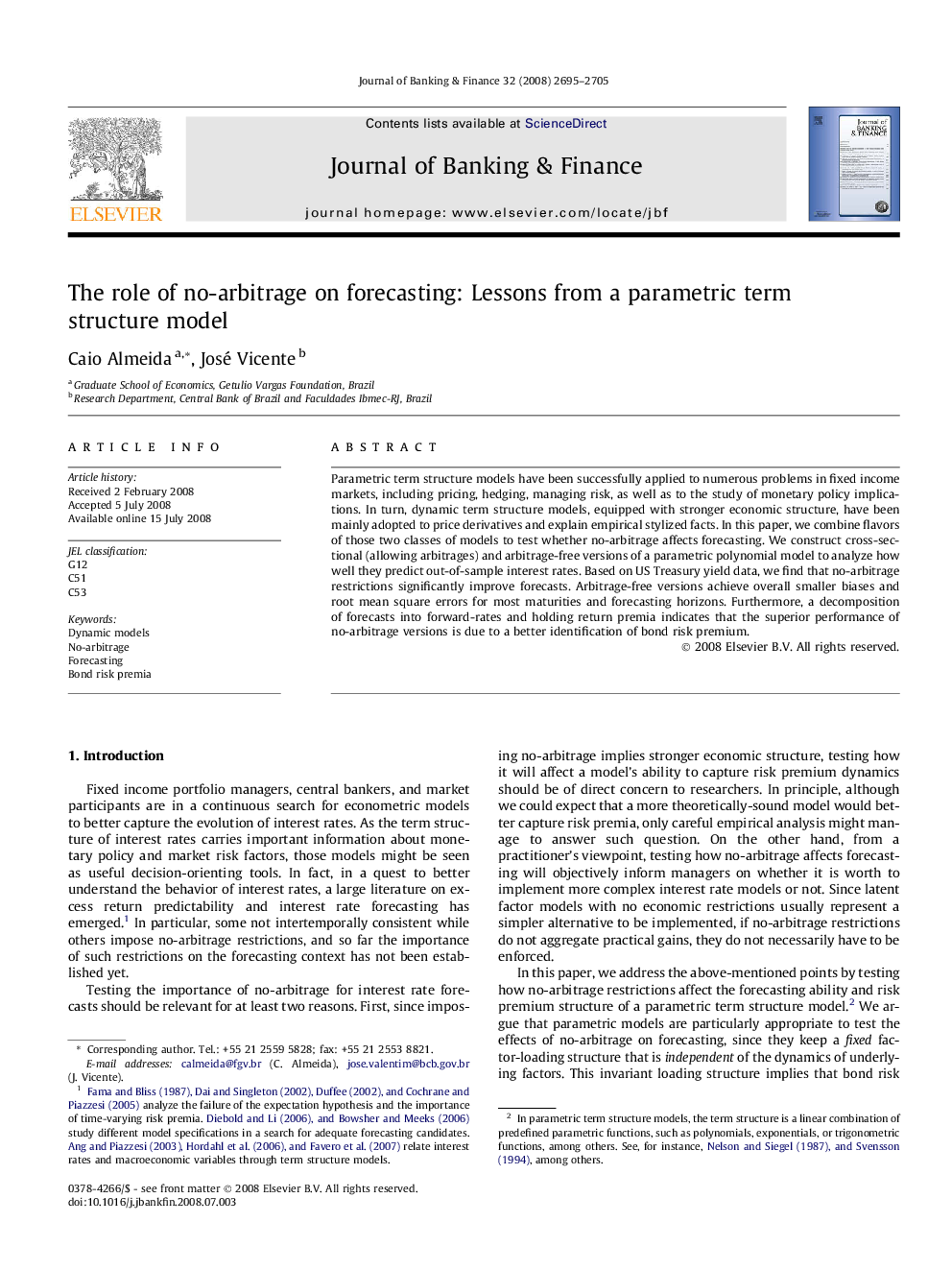| Article ID | Journal | Published Year | Pages | File Type |
|---|---|---|---|---|
| 5090671 | Journal of Banking & Finance | 2008 | 11 Pages |
Abstract
Parametric term structure models have been successfully applied to numerous problems in fixed income markets, including pricing, hedging, managing risk, as well as to the study of monetary policy implications. In turn, dynamic term structure models, equipped with stronger economic structure, have been mainly adopted to price derivatives and explain empirical stylized facts. In this paper, we combine flavors of those two classes of models to test whether no-arbitrage affects forecasting. We construct cross-sectional (allowing arbitrages) and arbitrage-free versions of a parametric polynomial model to analyze how well they predict out-of-sample interest rates. Based on US Treasury yield data, we find that no-arbitrage restrictions significantly improve forecasts. Arbitrage-free versions achieve overall smaller biases and root mean square errors for most maturities and forecasting horizons. Furthermore, a decomposition of forecasts into forward-rates and holding return premia indicates that the superior performance of no-arbitrage versions is due to a better identification of bond risk premium.
Related Topics
Social Sciences and Humanities
Economics, Econometrics and Finance
Economics and Econometrics
Authors
Caio Almeida, José Vicente,
